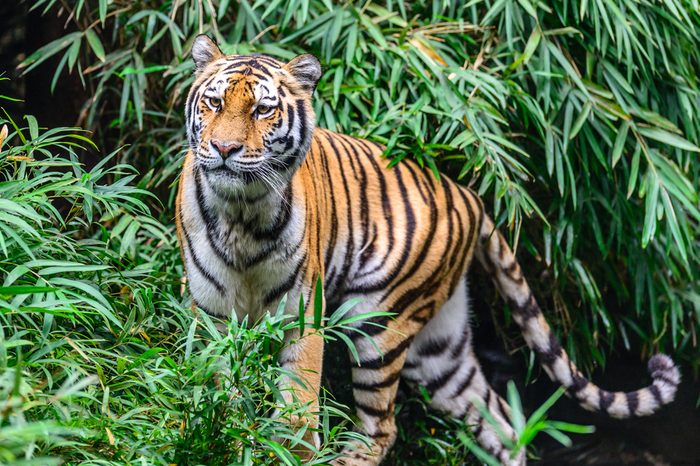
Bengal tiger
There are more than 2,500 wild Bengal tigers living in South Asia, making them the most populous subspecies in the world. “In India, Nepal, and Bhutan, they’re doing a good job of protecting their tiger populations,” says John Goodrich, PhD, senior tiger program director for Panthera, the global wild cat conservation organization. “In some of those areas, tiger numbers are increasing.” In fact, the World Wildlife Fund (WWF) recently announced that the tiger population in Bhutan’s Royal Manas National Park had doubled in less than a decade, to 22 animals from 10. Here are 14 animals you might not know are endangered.
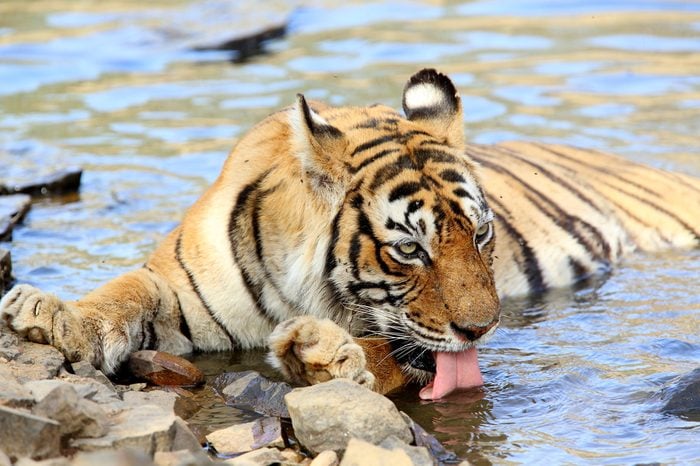
Machli, the Tiger Queen of Ranthambore
She’s been called the most-photographed tiger in the world. Machli was born in the Ranthambore National Park in northern India in 1997 and survived for an incredible 19 years (most tigers live 10 to 15 years in the wild), partly because she had become so popular among tourists that park officials tethered goats or other live prey to a pole for her once she got too old to hunt effectively on her own, rather than letting her starve to death. Park visitors loved her because she not only made a practice of lounging around in broad daylight but also had a reputation for being ferocious—she once killed a 14-foot crocodile on camera! Here are famous animals you never knew changed history forever.
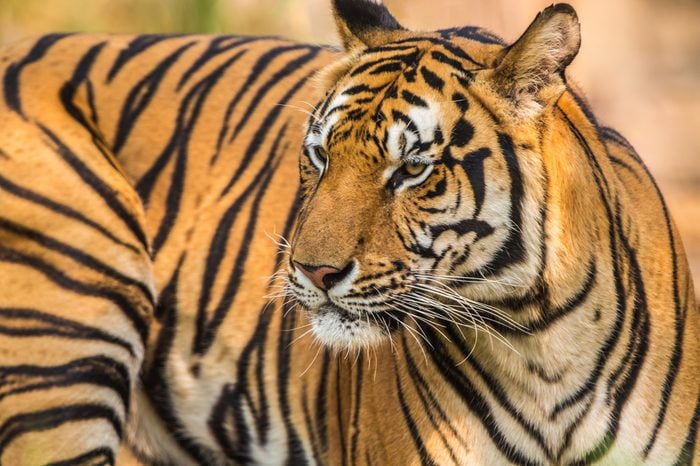
Indochinese tiger
These tigers are a little smaller than the Bengals, and although their range is quite large—they live in Cambodia, Laos, Burma, Thailand, and Vietnam—there are only an estimated 350 individuals in the wild. “Things are going pretty poorly in Southeast Asia,” Goodrich says. “The driving force behind the decline is medicinal parts going to China and Vietnam.” Nearly every part of the animal is sought after for cures to conditions ranging from epilepsy to laziness.
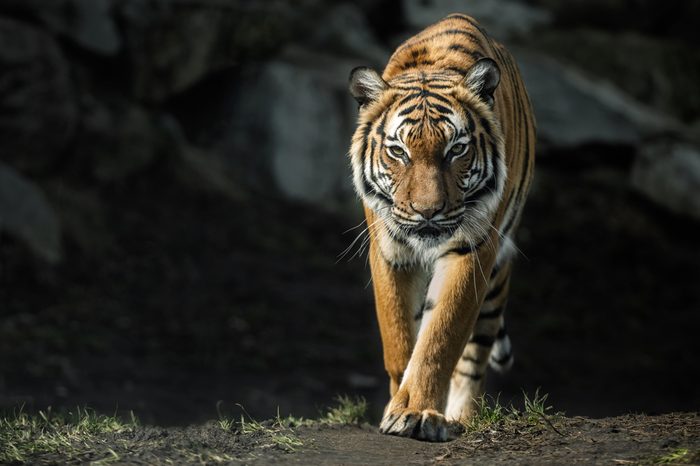
Malayan tiger
These were only determined to be their own subspecies in 2004 when DNA testing showed that they shouldn’t be classified as Indochinese tigers. They’re suffering from the same threats—including poaching and habitat loss—that afflict their nearby relatives. “Malaysia has a huge problem with gangs coming in from Thailand, from Cambodia, from Vietnam, and poaching on the ground,” Goodrich says. These tigers live only on the Malayan Peninsula and the southern tip of Thailand, and the WWF estimates that there are about 300 individuals alive in the wild.

Sumatran tiger
The smallest tiger subspecies (males average about 260 pounds, compared with 600 pounds for Amur tigers) has darker coloration than other types. With only about 400 individuals surviving on the island of Sumatra, they’re considered critically endangered. Indonesia imposes stiff penalties on poachers who get caught, including jail time and high fines. “Law enforcement activity might stem the flow, but poaching really needs to be stopped at the source,” Goodrich says. His organization, Panthera, focuses on both supporting law enforcement efforts and also monitoring and protecting tiger habitats.
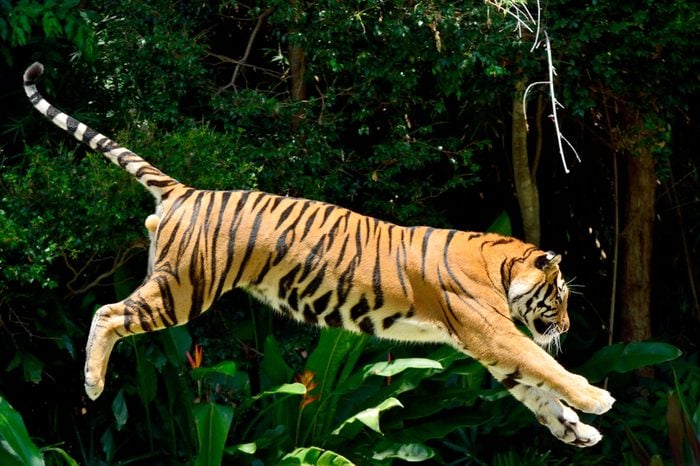
Bali and Javan tigers
It’s already too late for these two subspecies of tigers, each of which was restricted to its namesake island in Indonesia. The Bali tigers were extinct by 1950 and the Javan by the mid-1970s, according to the International Union for Conservation of Nature (IUCN). “It was different in that it was legal hunting, back in the day,” Goodrich says. “Some was sport, some was that people didn’t like tigers and wanted to protect themselves, whereas now it’s illegal hunting that’s driving the decline.”

Caspian tiger
The other subspecies that is extinct (since the 1970s), the Caspian tiger was closely related to Amur tigers that live in Siberia now. They lived in Turkey, Iran, Central Asia, and all the way east to Xinjiang, China. “They were distributed over a fairly vast area,” Goodrich says, “but the habitats in those areas were small and tended to be very linear, along river bottoms. It was easy to hunt them out, and most of their habitat has been lost.” Although the Caspian subspecies has completely died out, there’s currently an effort afoot to repopulate an area in Kazakhstan with Amur tigers—they’re starting by reintroducing prey species to the area, including wild boar and deer.
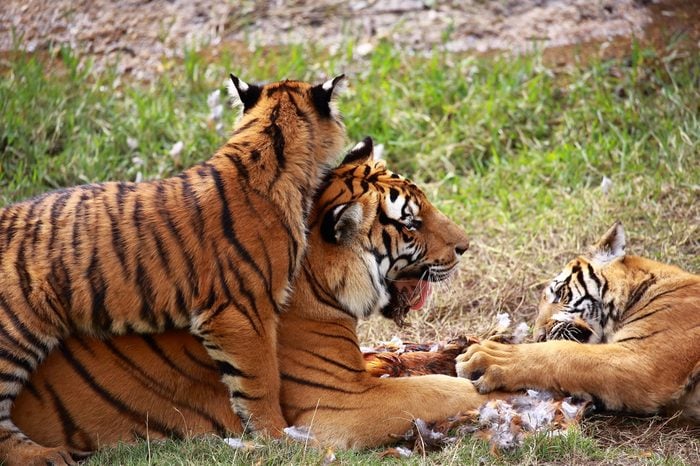
South China tiger
Unlike the Bali, Javan, and Caspian tigers, the South China tiger isn’t completely extinct; we think they only live in captivity now—none have been officially recorded in the wild since the early 1970s, though tracks were found in the 1990s in the mountains of Fujian, Hunan, and Guangdong provinces. Back in the 1950s, there were about 4,000 South China tigers living in the wild, but they were thought of as pests and were intentionally hunted until the government banned killing tigers in 1979. Check out these 50 adorable animal photos that will instantly brighten your day.
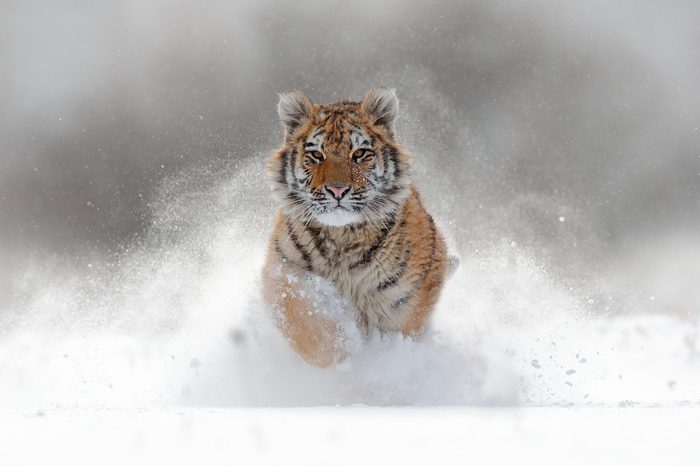
Amur tiger
The history of the Amur tiger—also known as the Siberian tiger—is almost the opposite of the South China tiger’s. By the 1940s, there were thought to be only about 40 Amur tigers left in the wild, but Russia was the first country in the world to grant them full protection, in 1947. By the 1980s, their numbers had risen to around 500, and they’ve stayed fairly stable there despite increased poaching after the collapse of the Soviet Union. The Amur tiger is the biggest tiger subspecies and, in fact, the biggest cat on Earth, outweighing the largest lions by more than 100 pounds. Plus, according to Andrey Shorshin, press secretary for the Amur Tiger Center, “They are the only subspecies that can live in snow and extreme subzero temperatures.” Find out the 23 facts about animals you probably have all wrong.
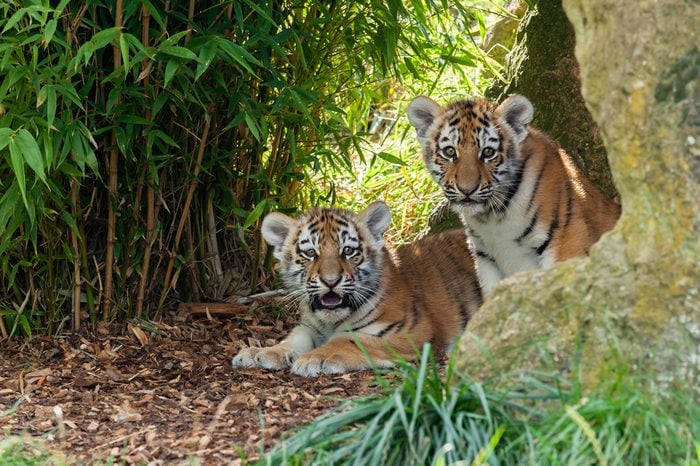
Rehabilitation of Amur tigers
Amur tigers are still vulnerable to poachers, however. Goodrich says that orphaned cubs often turn up in winter when it’s easy for poachers to follow tracks in the snow to kill their mothers. He’s worked with conservation groups in Russia to figure out the best ways to rehabilitate tiger cubs so they can be released in the wild, and it seems to be working. “You take a four-month-old cub—that animal will never become a nice calm zoo tiger,” he says. “It will always act aggressively toward people, which is what tigers need.” They have to be raised in large enclosures of their natural habitat with very little contact with people so that when they’re released, they don’t turn to humans for food and start killing livestock.
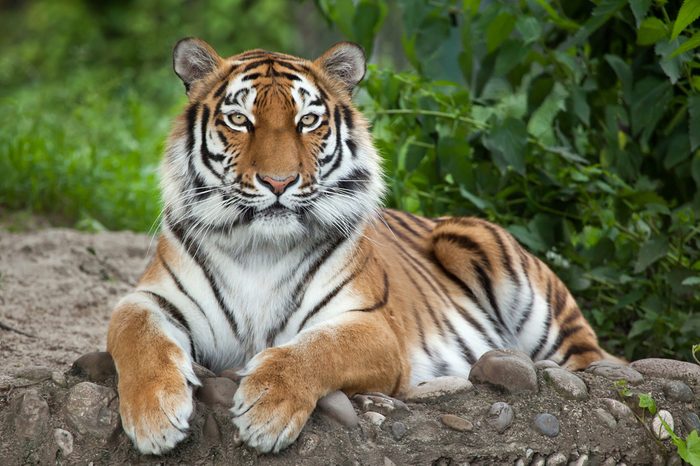
Vladik
When a young Amur tiger named Vladik was found wandering in the city of Vladivostok in the fall of 2016, he became a local celebrity. He was captured and moved to the Amur Tiger Center for rehabilitation, and then released into a national park seven months later. Since then, the center has tracked his whereabouts via his radio collar, and even though he’s traveled far and wide, he’s stayed clear of humans. “There’s no evidence or messages from locals that he’s been seen near villages or towns,” says Shorshin. “What I find more interesting is that Vladik has passed some places (wide, busy roads; railroads; etc.) that were considered to be a huge obstacle not only for tigers but all animals. And he was never spotted.”
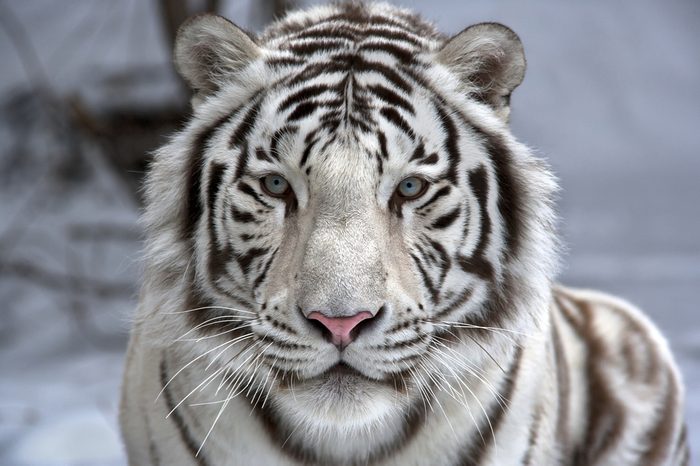
White tigers
The unusual coloration pattern was first recorded among Bengal tigers in India at least 400 years ago, but none have been seen in the wild since 1958. They’re common in zoos and among performers, however, but all the white tigers alive today are believed to have been selectively bred from a male cub that was captured in 1951—many suffer from birth defects (particularly crossed eyes) as a result of the inbreeding.

Mabel Stark
Few circuses use tigers in live performances anymore—Ringling Bros. and Barnum & Bailey Circus put on its last show in 2017—but there was a time when big cats were a major attraction under the big top, and Mabel Stark made history as the first female tiger trainer, more than a hundred years ago. A 2018 documentary by Leslie Zemeckis tells her story, including accounts of her many unpleasant run-ins with the trainees. “There was almost no flesh on her legs,” an acquaintance says in the film.
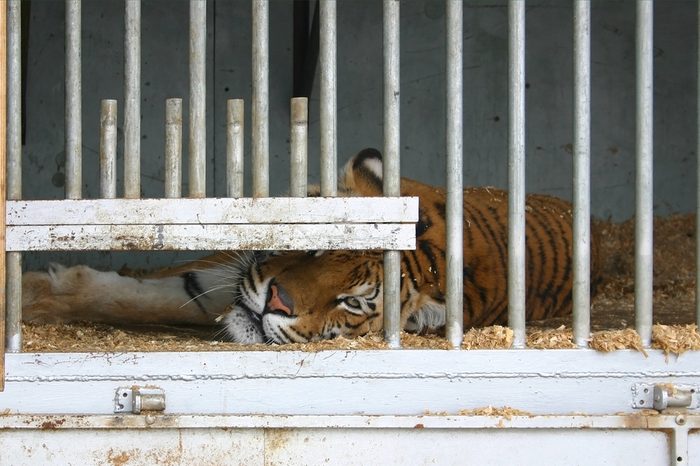
Captive tigers
Even without performing big cats, though, the WWF estimates that more tigers live in captivity in the United States (possibly 5,000) than live in the wild altogether—and only about 6 percent of them are in zoos or other accredited facilities. The rest live in backyard pens, truck stops, private breeding facilities, and even apartments. Such tigers can never be introduced to the wild, Goodrich says.
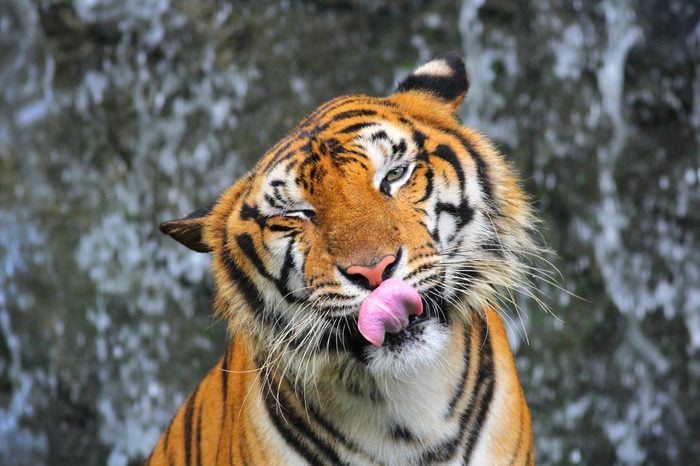
Long-term prospects
Goodrich says that although poaching and other threats to tigers are still major obstacles to their recovery, we shouldn’t give up. “I’m starting to feel a bit optimistic, looking at it from trade standpoint rather than poaching on the ground,” he says. “A number of people I’ve talked to recently with lots of experience in China think the younger generations are changing, becoming more environmentally aware and shunning the use of wildlife products.” If protection and repopulation projects like those in South Asia and the Russian Far East continue to outpace the efforts of poachers and developers, the big cats might manage to hang around. Find out the 12 endangered baby animals that are making a comeback in the world.